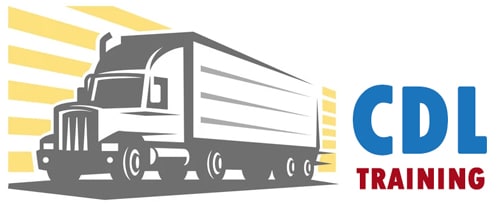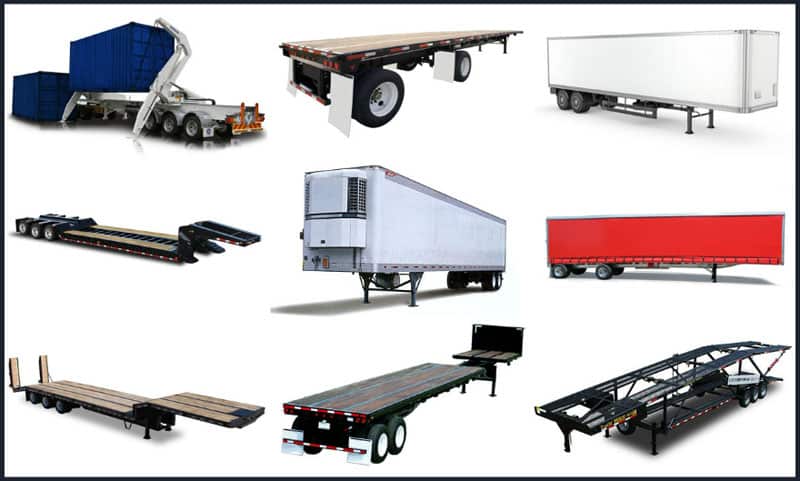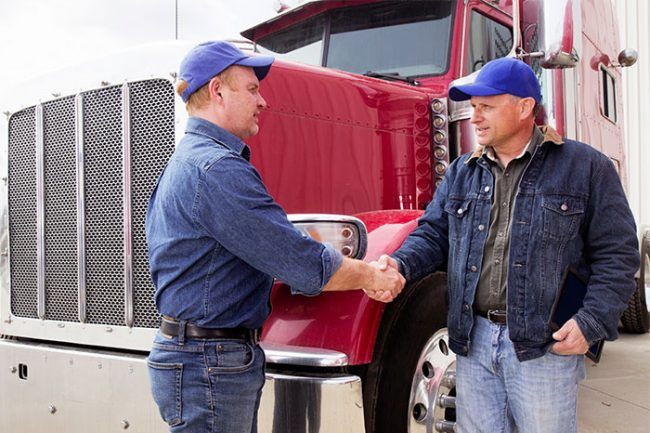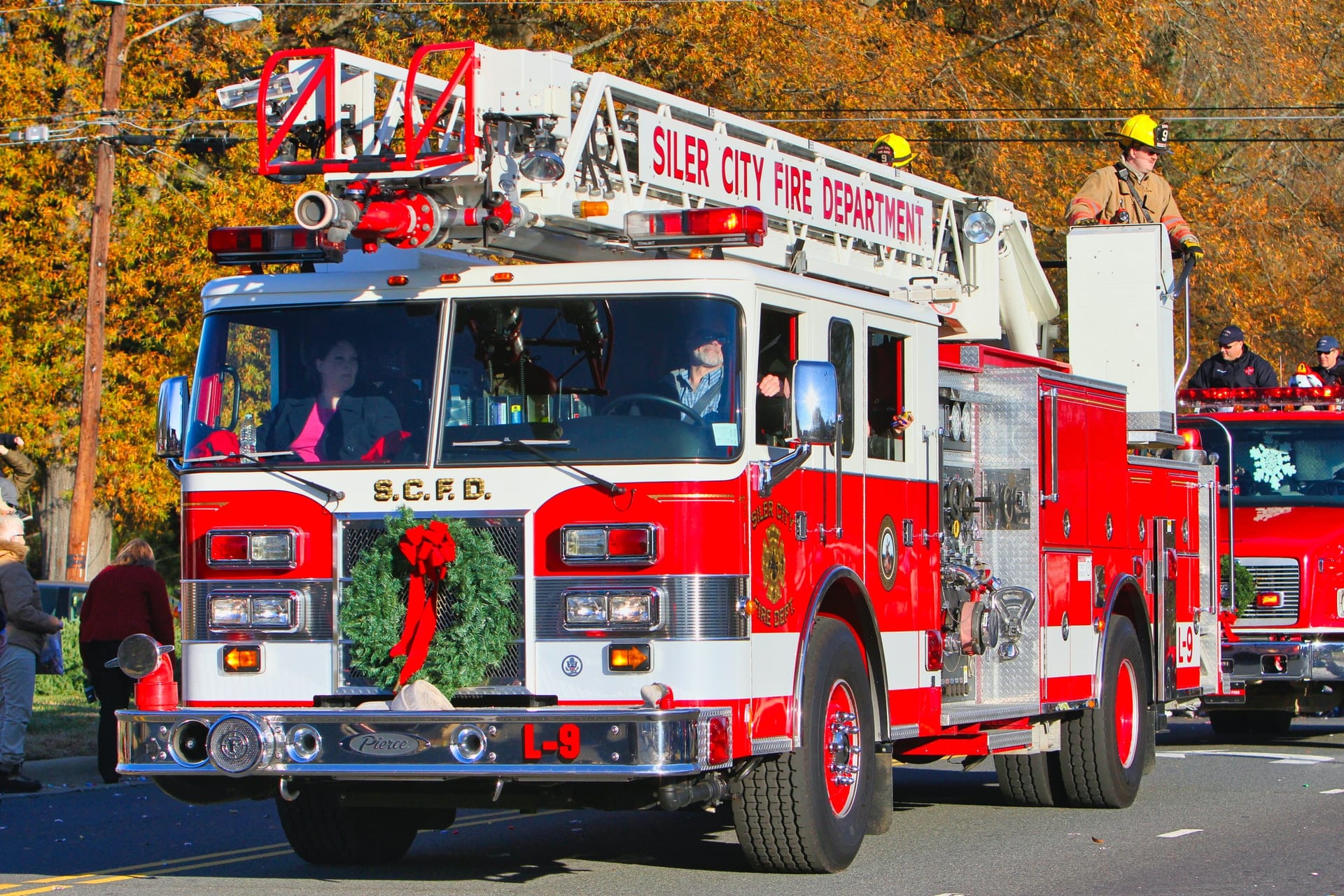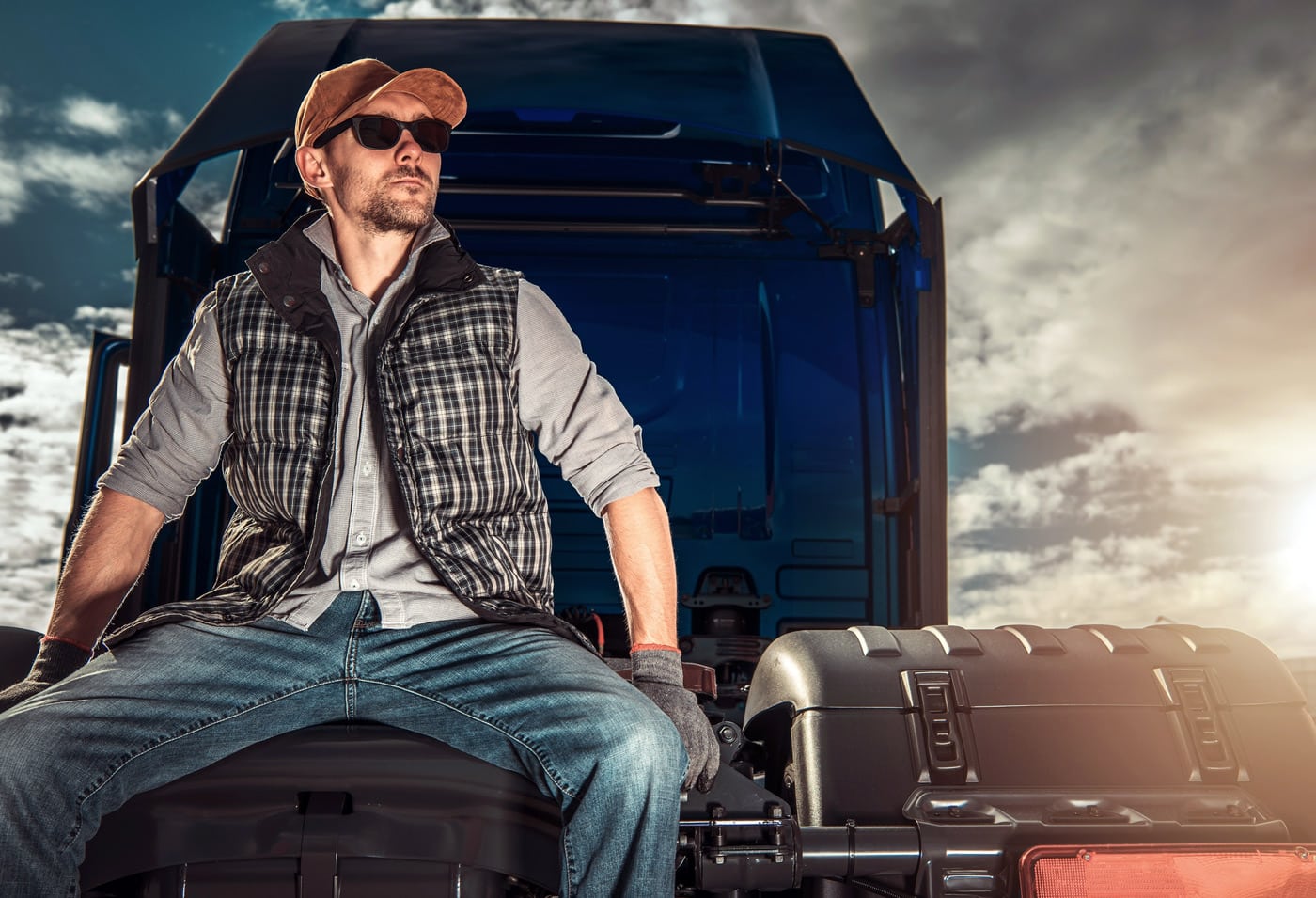Truckers have a lot of different trailer types to choose from, depending on the freight that’s being hauled. From an RGN trailer to a lowboy trailer, there are a lot of options, but the right one for you will depend on what type of loads you want to haul.
Each trailer type has different dimensions and total weight, so some may not be ideal for certain loads.
Knowing the types of trailers and their limitations can help you choose the right trailer for the job.
Truck Trailer Types 101
Choosing the right trailer for the job requires a full understanding of the freight’s weight, dimensions and type. The right trailer may also depend on local state requirements, which can vary greatly from one state to another.
Conestoga Trailers
A prominent trailer type with a rolling tarp that can be covered and uncovered for easy access and protection to the freight. Conestoga trailers have the following dimensions:
- Length: 48-feet to 53-feet
- Width: 8.2-feet
- Height: 8-feet
Freight weight can range from 42,000 to 45,000 pounds. The tarp system is the key selling point of the Conestoga trailer and offers maximum space for different load sizes. Shippers started realizing the versatility of these trailers to haul everything from odd-sized loads to steel, lumber, machinery and other materials.
Dry Van / Enclosed Trailers
Dry van and enclosed trailers are identical to Conestoga trailers in every sense except that these trailers are enclosed. Freight is loaded from the rear of the trailer, and side loading is also possible. Dimensions for these trailers are:
- Length: 48-feet to 53-feet
- Width: 8.2-feet
- Height: 8-feet
Maximum freight weight is 42,000 to 45,000 pounds.
Flat Bed Trailers
There a few types of flatbed trailers: traditional, step deck and extendable. Flatbed trailers are versatile, so they’re often used in the trucking industry. Dimensions for a flatbed trailer are:
- Length: 48-feet to 53-feet
- Width: 8.5-feet
- Height: 8.5-feet
Maximum weight of a flatbed trailer is 48,000 pounds.
Extendable Flatbed Stretch Trailers
For certain loads, the length of a traditional flatbed is simply too short. When these longer loads are necessary, an extendable flatbed is the go-to choice. These trailers have the capability of hauling loads up to 43,000 pounds.
Dimensions for these trailers are:
- Length: 48-feet to 80-feet
- Width: 8.5-feet
- Height: 8-5feet
Lowboy Trailers
When taller freight needs to be hauled, a lowboy trailer is the optimal choice. These trailers are low to the ground and chosen in cases where items are over the legal height when placed on a flatbed. Lowboy trailers are on two axles and have the following dimensions:
- Well Length: 24-feet to 29.6-feet
- Well Width: 8.5-feet
- Well Height: 18 – 24 inches
Maximum weight is 40,000 pounds.
Refrigerated Trailers
When hauling food items or freight that requires a controlled environment, refrigerated trailers or reefers are ideal. The interior of the trailer can be fully controlled to match the requirements of the freight.
Dimensions of a refrigerated trailer are:
- Length: 48-feet to 53-feet
- Width: 8.2-feet
- Height: 8-feet
Weight maximums for a refrigerated trailer is 42,000 to 45,000 pounds.
Side Kit Trailers
A side kit trailer is the go-to choice when the freight being hauled cannot be packaged or crated. The sides of these trailers are made with plywood or fiberglass panels. The maximum freight dimensions are:
- Length: 48-feet to 53-feet
- Width: 8.2-feet
- Height: 8.6-feet
Maximum load weights can range from 42,000 pounds to 45,000 pounds.
Step Deck Trailers
Step deck or single drop trailers are comprised of a top and bottom deck. These are specialty trailers that are used when a standard flatbed will not suffice. The step deck’s dimensions are:
- Length: 48-feet to 53-feet
- Width: 8.5-feet
- Height: 10-feet
Maximum weight for a step deck is 48,000 pounds.
Stretch Single Drop Deck Trailers
Stretch single drop trailers are designed to haul exceptionally long loads. Added supports are in place to prevent overhang. The dimensions of the trailer are:
- Length: 35-feet to 63-feet
- Width: 8.5-feet
- Height: 10-feet
Maximum freight weight for the stretch single drop is 45,000 pounds.
Stretch Double Drop Trailers
When a stretch single drop deck won’t do, a double drop is the next best option. These trailers are designed for oversized loads and have the ability to haul products up to ten feet in height. The maximum freight dimensions of the stretch double drop are:
- Length: 29-feet to 65-feet
- Width: 8.5-feet
- Height: 11.6-feet
Maximum weight capacity for the stretch double drop is 45,000 pounds.
Extendable Double Drop Trailers
An extendable double drop is more versatile than the stretch model, yet it has a lower maximum weight capacity of 40,000 pounds. Two or three axle models exist for different weight requirements. The maximum dimensions of this model are:
- Length: 29-feet to 50-feet
- Width: 8.5-feet
- Height: 11.6-feet
Removable Gooseneck Trailers
Removable gooseneck trailers, also known as RGN trailers, are designed for carrying tall and long freight. These models can have their front detached to create a sort of ramp that allows for easier loading and unloading.
Maximum freight dimensions are:
- Length: 29-feet
- Width: 8.5-feet
- Height: 11.6-feet
RGN trailers are designed to accommodate maximum weights that the other trailers on our list would buckle under. Freight of up to 150,000 pounds can be hauled on an RGN trailer, with the number of axles ranging from 3 to 20, depending on weight requirements.
Due to their specialized design, the removable gooseneck trailer has a higher operating cost.
Stretch Removable Gooseneck Trailers
A stretch RGN is what truckers opt for when a traditional RGN is unable to carry freight that is too long. The RGN trailer has a minimum of three axles and can carry loads that are between 42,000 and 150,000 pounds.
Maximum freight dimensions are:
- Length: 29-feet to 65-feet
- Width: 8.5-feet
- Height: 11.6-feet
Specialized Trailers
Some freight is too large or too unique to be hauled on a traditional trailer. When freight is different and cannot be hauled on a double gooseneck or a dolly, specialized trailers will be used.
Specialty trailers are often used alongside one of the following: dolly, double gooseneck or perimeter.
Maximum haul weights are 200,000 pounds or more.
Dimensions are completely custom, and will depend on the freight being hauled and the regulations of the state.
Landoll Traveling Trailer
When loads can be rolled on a trailer but won’t fit in a standard shipping container, a Landoll is a good option. While you won’t see these trailers at docks, you will find them used for specialty loads.
These trailers have 6 to 7 axles and do not come with an extendable option.
Weight allowances range from 50,000 to 110,000 pounds. Freight dimensions can maximize at a length of 41-feet to 53-feet.
Hot Shot Truck Trailers
Hot Shot truckers are responsible for hauling loads short distances and often for major utility companies, such as oil companies. These positions require the driver, often operating their own truck, to haul loads using a Ford F-350 or similar truck.
The Hot Shot trailer is only able to haul loads under 25,000 pounds, and they’ll have 4 to 5 axles, depending on the size.
Trailers of different dimensions and weight loads will need to be swapped out, depending on the type of load you’re hauling. Trucking companies will often supply trailers even to owner operators to make sure that loads arrive to their final destination on time.
